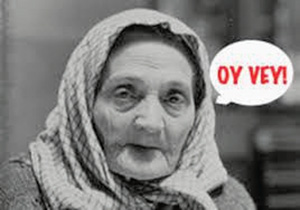
Rock groups cover originals, reporters cover stories, grizzly bears cover their tracks, cornerbacks cover wide receivers, dust jackets cover books and Jews… cover challahs. On Shabbos, the challahs are hidden under a beautiful blanket until kiddush is made, hands are washed and hamotzi is recited. Challah covers often are colorful and eye-pleasing, adding extra panache and flair to the Shabbos table.
To be clear, Jews do not cover their challahs to keep them warm, safe or a surprise. Jews do not cover their challahs to play peekaboo or hide-and-go-seek. Jews do not cover their challahs to avoid the press, paparazzi or door-to-door salespeople. Jews also do not cover their challahs for a Houdini-inspired magic trick (“Ta-Da!”) or to protect them from the elements.
According to most scholars, Jews cover their challahs for at least three thoughtful reasons.
Reason #1: Jews cover their challahs in recognition that the Shabbos meal itself does not come about because of the challahs. Rather, it arrives by virtue of making kiddush over the wine. In this connection, the Talmud states that one actually should not even roll out the Shabbos table until after kiddush in order to highlight that the kiddush is the essential driver: “And the Sages agree that one may bring the table only if he has already recited kiddush.” (Pesachim 100b) As an aside, this idea of moving tables from room to room should create a whole new level of appreciation for the folding table, which does not get the respect it deserves. Folding tables typically take a backseat to coffee tables and end tables. Even ping pong table and foosball tables get more respect than folding tables. This might be the case because folding tables never fully stand up for themselves; every time they are pushed around, they tend to… fold.
But let’s table this table discussion for another day and let’s get back to the challah cover issue. The Talmud further states that “if one [already] brought out the table before kiddush, one should [instead] spread a cloth over the food and recite kiddush.” (Pesachim 100b) Based on this provision, Jews cover the challahs as an alternative symbolic gesture of deference to the kiddush, a wink to the wine and give to the grape. How do I know this? I heard it through the grapevine.
Reason #2: Jews also cover their challahs to avoid embarrassment. No, not like a curtain in a changing room. And no, challahs are not covered to hide their unpleasant burnt edges, cracked crusts or other baking defects. The potential embarrassment at issue stems from a perceived slight that the challahs might feel. Ordinarily, a meal would begin with a bracha over bread (hamotzi lechem min haaretz) before the bracha over wine (borei pri hagafen) is recited. On Shabbos, however, the tables are turned (and possibly folded) so that the hagafen bracha takes precedence over and thus precedes the hamotzi. Once again, the kiddush is the star of the show and thus the challah arguably has a legitimate reason to feel snubbed. In this situation, however, there is little that can be said to console an angry challah and you certainly should not attempt do so. If people see you talking to a loaf, they will think you are half-baked.
Reason #3: Jews also cover their challahs to commemorate the manna that rained down from heaven during the forty years in the desert. The Talmud states that the manna that fell in the desert was encased on both sides by a layer of dew: “Rabbi Yosei, son of Rabbi Ḥanina, said: There was dew above and dew below, with the manna in between, and the manna appeared as if it were placed in a box of dew.” (Yoma 75b) (Yes, a “box of dew” also would describe what a soda machine vendor carries to restock a particular Pepsi-brand beverage.) So, challah covers are a nod to the dewy desert experience. And yes, back in the desert, Jewish librarians used the “Dewy” Decimal System. The books were a little damp but easy to track.
There is yet another possible reason for covering the challahs on Shabbos. Challah covers make wonderful gifts and, like challah boards and knives, are among the bestsellers at most Judaica stores. These vendors rely on selling challah covers just like bakers rely on every customer needing two challahs. The profits are baked in, so to speak.
Final thought: Jews actually cover things other than challahs. Heads are covered with kippot, a sukkah is covered with s’chach and the chazzan is covered with cantorial insurance.
By Jon Kranz










